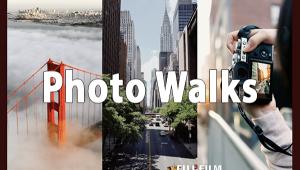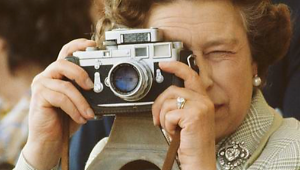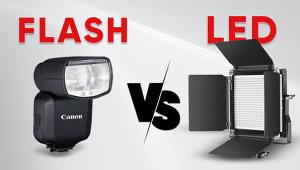Air Travel and Digital Memory Cards
These findings mean that digital cameras and their image storage media can travel safely in either checked or carry-on bags, which will be reassuring to holiday travelers. And though they were not explicitly tested, it is likely that images on camera-phones will be safe in either situation as well. More care is needed for cameras with film, however, as the X-ray scanners for both checked and carry-on luggage can fog both developed and undeveloped film.
"Our tests should put travelers' fears to rest, that their digitally captured holiday memories won't be damaged in transit," said Lisa Walker, I3A President. "Digital cameras and media can safely go in carry-ons without the need for hand-inspection, which will simplify security checks and make those long lines move a little faster."
The tests of digital media took place at the TSA Security Laboratory in Atlantic City, N.J. A broad selection of media and devices from a range of manufacturers, loaded with detailed images, was subjected to repeated passes through X-ray scanners matching those now in use at transportation facilities. At the end of the tests, the images were unaltered and the devices showed no sign of damage. Complete details on the tested media cards, test protocols and results can be downloaded from http://www.i3a.org/itip.html.
Separate tests were conducted at the same facility to determine whether the walk-through metal detectors or hand-held metal detector wands have any effect on digital image storage media. As with the X-ray scanners, no damage to media or images was perceived from either of these devices.
The technical support center at SanDisk, a prominent manufacturer of digital media, has been closely monitoring the X-ray issue for several years. As SanDisk ships over a million flash memory cards per week, any issues from security devices would quickly become apparent, but the company has received fewer than a dozen reports per year of problems with airport security systems.
"The Atlantic City lab tests confirm our own observations about the durability of digital media. SanDisk tests have shown that images can be stored for years on flash media cards, without deterioration," said Wes Brewer, SanDisk vice president of consumer products marketing. "In fact, we advise travelers that leaving their images on flash memory cards provides the most durable and dependable method of storing and transporting them. Although the various forms and brands of flash memory cards have different manufacturing processes, consumers who buy recognized brands from reliable sources should have no concerns about traveling with their cards through airport check-points."
The digital media test program is an ongoing initiative of I3A's Integrity in Transportation of Imaging Products (ITIP) Committee, which is composed of representatives from Agfa Corporation, Eastman Kodak Company, Ferrania Imaging Technologies, Fuji Photo Film Co., Ltd., Hewlett Packard Company, Ilford Imaging Group, Konica Minolta Photo Imaging, Photo Marketing Association International, Photo-Sensitized Materials Manufacturers Association and Sony Electronics.
ITIP has conducted extensive tests over a period of years to assess the effects of security scanning on film products. Test results to date indicate that the X-ray scanners used for screening carry-on bags will damage high-speed film (ISO 800 or greater). For lower-speed film, the problem appears to be cumulative: the majority of damage has been reported when film has undergone more than five passes through X-ray machines.
Accordingly, I3A advises travelers to request hand inspection of their high-speed (ISO 800 or greater) film products, which is explicitly permitted by law. Hand inspection of lower speed film is recommended only when the film has already been subjected to five trips through X-ray scanners. The screening machines used to screen checked baggage and some cargo will damage all film, regardless of speed. Therefore, I3A and the TSA both advise travelers to carry their film with them and never put it in checked bags.
To help make sure the hand inspection service is consistently available, ITIP has enlisted I3A members in an ongoing effort to gather information on implementation of airport film warnings and advisory signage in U.S. airports; the collected reports are summarized and forwarded to TSA.
"Helping passengers understand how to safely and properly carry their film through security screening is certainly a key element of our customer service efforts at TSA," said Ron Sokolov, Executive Director for Customer Service at the Transportation Security Administration. "Our partnership with I3A has been instrumental in evaluating the impact of our screening technologies on different film media and then getting this information to a wide audience that includes amateur and professional photographers."
When the TSA was established in 2001, I3A formed the ITIP Committee to work with TSA to address the issues arising from the effects on imaging products in transit of increased security measures in transportation. In December 2002, I3A and TSA jointly issued guidelines to help travelers protect their film and cameras from security scanning equipment. ITIP's charter also includes advising authorities specifying and implementing new postal sanitization equipment about its effects on imaging materials and how to protect those materials from damage. I3A's research, reports and guidelines are available to the public at no charge on its Web site, www.i3a.org.
- Log in or register to post comments

















































